Sketchbook cover page designs can totally wow your friends—think minimalist typography with bold fonts, playful nature doodles, color blocks that pop, groovy mixed media collages, and hand-drawn doodle frames that look like they belong in a cartoon show. From quirky character sketches and inspiring quote banners to botanical line borders, vintage textures, and cool sticker collages, there’s a style for every vibe. If you like wild, creative, and totally unique covers, some super fun ideas are just around the corner.
Key Takeaways
- Minimalist typography covers with bold, clean fonts and generous whitespace emphasize creativity through modern simplicity.
- Nature-inspired designs use whimsical flowers, animals, and watercolor textures for playful and on-trend cover art.
- Bold color-blocked covers feature striking geometric shapes and vibrant contrasting hues for energetic, eye-catching appeal.
- Collage and mixed media covers creatively layer magazine clippings, stickers, and photographs to showcase individuality.
- Vintage-inspired textures, retro typography, and layered elements evoke nostalgia and create a tactile, story-driven design.
Minimalist Typography Focus
Sometimes, all it takes is a great font to make a sketchbook cover stand out. In fact, minimalist typography can turn a regular cover page into something seriously cool.
Forget fancy swirls or wild colors—here, less is more! With clean, simple fonts, a cover can look modern and fresh, almost like it belongs in an art museum… or at least your backpack.
Most designers love sans-serif fonts for this style since they’re sleek and easy to read. Keeping the color palette simple, like black, white, or soft grays, helps the words really pop.
Whitespace isn’t just empty space; it makes everything feel lighter and lets your title shine. Varying font size and weight helps important words grab attention—no shouting required!
Whimsical Nature Motifs
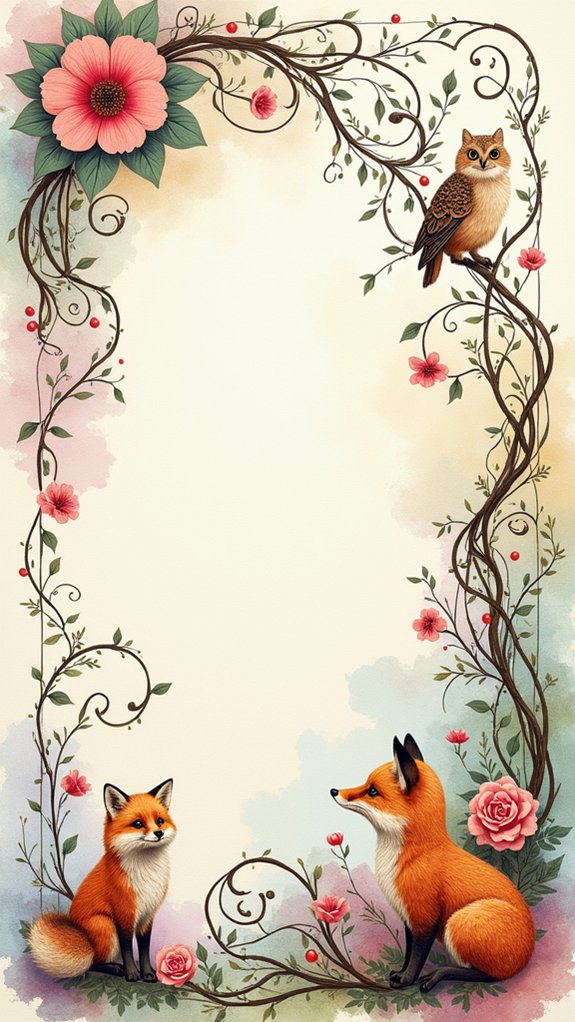
Even though sketchbook covers are supposed to protect your art, there’s no rule saying they can’t be works of art themselves—especially with whimsical nature motifs in the mix.
Cover Ideas featuring playful flowers, quirky animals, or swirling vines have a way of making a sketchbook impossible to ignore. Imagine opening your notebook to see a cheery fox peeking out from wildflowers or a bright rainbow tree stretching across the page—it pretty much dares you not to smile.
Adding watercolor splashes, ink doodles, or even nature-themed stickers instantly brings texture and personality. Plus, these Cover Ideas are completely on trend; they’ve racked up over 22.8k views online.
Bold Color Block Design
Energy practically leaps off the page with a bold color block design, turning an ordinary sketchbook cover into something you want to reach out and grab. This style isn’t shy—it crashes onto the Sketchbook Page with vibrant, contrasting colors that practically dare you to look away. Artists combine big chunks of reds, blues, yellows, and more, creating patterns that feel playful and super current. Geometric shapes, like triangles or squares, slice the color into modern, eye-catching sections. From markers and paints to digital brushes, there’s a way for everyone to join the color block party. The best part? These bold covers set the mood for all the creative adventures waiting inside. Here’s a quick look at color block possibilities:
| Shape Type | Color Palette | Technique |
|---|---|---|
| Triangles | Primary colors | Markers |
| Squares | Pastels | Acrylic |
| Circles | Neons | Digital |
| Abstract | Earth tones | Watercolor |
Collage and Mixed Media Aesthetics
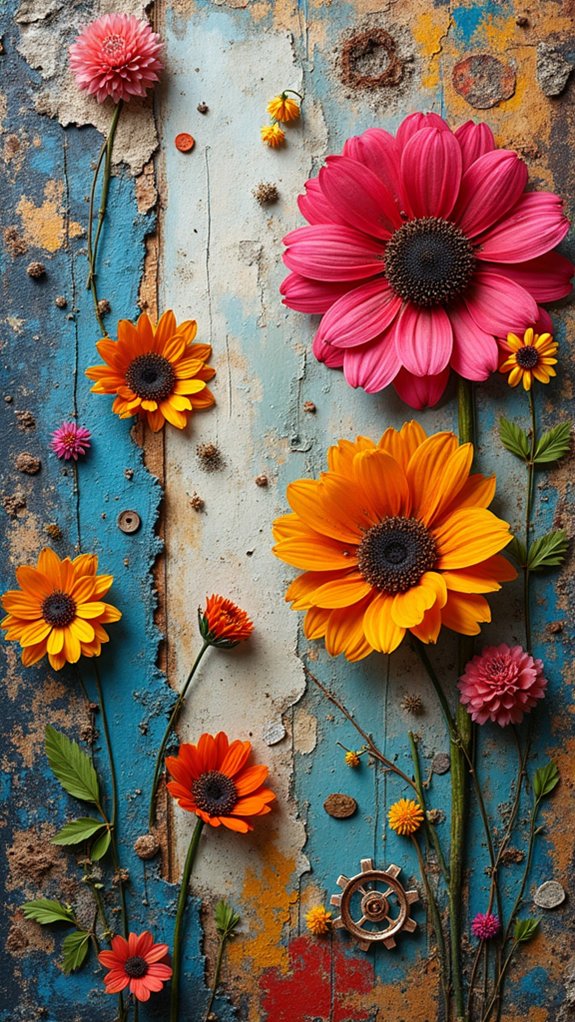
Plenty of artists love turning their sketchbook covers into a wild playground using collage and mixed media. Seriously, why settle for plain when you can have a textured, one-of-a-kind masterpiece staring back at you?
Mixed media aesthetics give everyone the power to layer up photographs, magazine clippings, and even random stickers found under their bed (no judgment). These covers often pop with creativity because every piece—glued, painted, or scribbled—adds personality and surprise.
- Layered magazine cutouts and stickers create bold themes or moods
- Mixing ink splatters, textured paper, and watercolor washes builds visual depth
- Personal touches like inspirational quotes or weird hand-drawn creatures show off unique style
The best thing? Collage design isn’t about perfection. It’s about enjoying the chaos and letting creativity reign!
Hand-Drawn Doodle Frames
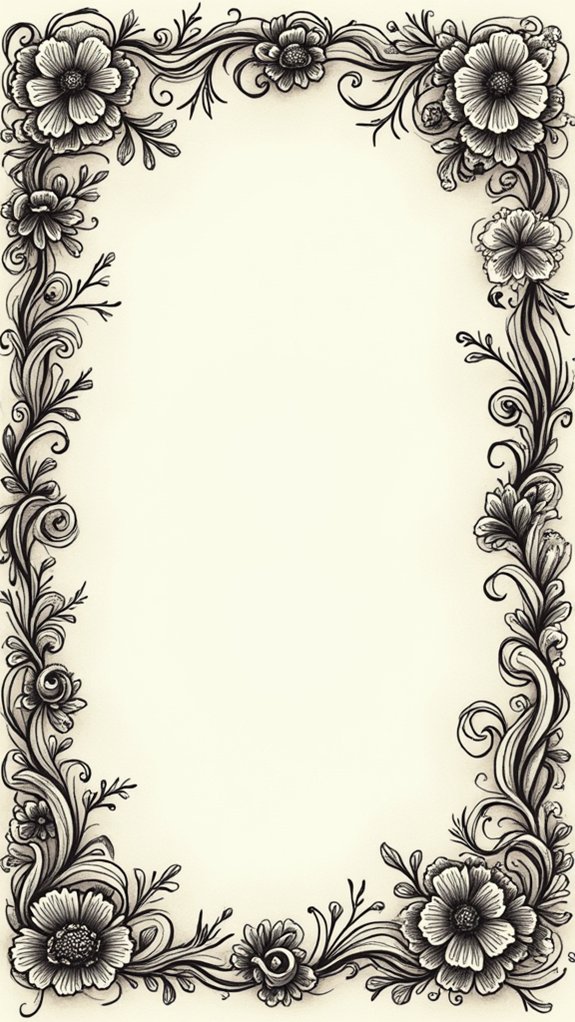
Hand-drawn doodle frames are like the cool sneakers of sketchbook covers—they give everything inside a fun border and show off your personality right from the start.
By mixing things up with whimsical shapes, bold ink layers, and quirky patterns, artists can turn a plain edge into something eye-catching and totally their own.
Whether you go for lightning bolts, swirling vines, or a frame of tiny tacos (because, why not?), there are endless ways to let your ideas sneak onto the cover before your actual sketches even begin.
Whimsical Border Patterns
Even though a sketchbook is often judged by the art inside, a wild and playful border pattern around the cover can totally steal the show before anyone even opens it. Whimsical border patterns, especially hand-drawn doodle frames, are like a secret handshake telling everyone, “Hey, something cool is happening here.”
Swirls, tiny stars, goofy flowers, or zigzag geometric shapes—all these choices help personalize a sketchbook, making it as unique as its owner. Mixing line thicknesses and layering different patterns give these borders real wow-factor and depth, so nobody can claim your sketchbook looks bland.
Plus, designing these borders is fun, easy, and accessible for everyone—no fancy supplies needed! For some inspiration, try doodling:
- swirling cosmic spirals
- playful flower chains
- bold, funky zigzags
Layered Ink Techniques
There’s something almost magical about watching doodle frames come to life with layered ink techniques.
Imagine sketchbook pages where simple lines turn into eye-popping borders just by adding more layers of ink! It’s like building a doodle sandwich—first, a thin outline, then some bold marks, maybe some squiggly details, and finally, splashes of contrasting ink.
Artists mix gel pens and felt-tip markers to make their sketchbook covers really stand out. Choosing different line weights and experimenting with shading add extra drama, giving frames tons of personality.
Using this method isn’t just about decoration—it actually boosts doodling confidence, too. With every layered swirl or zigzag, those sketchbook pages become a playground for creativity, making it almost impossible not to try one more doodle.
Personalized Motif Ideas
Motifs are like secret codes splashed across a sketchbook cover, letting the world know exactly whose imagination lives inside.
With hand-drawn doodle frames, anyone can take the idea of personalized motif ideas and run wild—all over their very own cover. The joy starts with whimsical touches: maybe a swirl of stars, a cluster of flowers, or even cool zigzagging geometric shapes.
Want inspiration for sketchbook cover doodles? Try adding symbols that hint at your hobbies, your favorite animal, or even an inside joke (bonus points for mystery). Mix up thick and thin lines or toss in bursts of color for extra pop.
Here are some doodle frame ideas to try:
- Floral vines circling your name
- Colorful, comic-style speech bubbles
- Icon mash-up: stars + pizza + headphones
Geometric Patterns and Lines
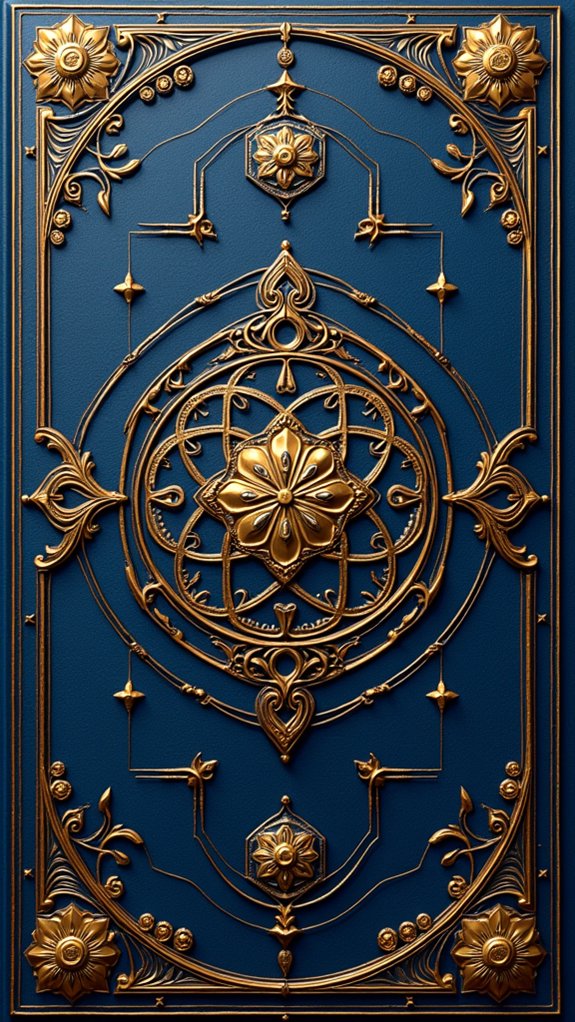
When it comes to sketchbook cover page designs, geometric patterns and lines bring a bold, eye-catching vibe that’s tough to ignore. Whether it’s triangles, circles, or good old squares, these shapes can transform a plain cover into something super cool and interesting.
Play with thick or thin lines—they can zigzag, crisscross, or run straight across, making the cover look extra dynamic. A pop of vibrant color turns everything up a notch; suddenly, your sketchbook isn’t just a book, it’s a mini masterpiece!
Adding contrasting colors makes certain shapes jump out, demanding attention (hey, sometimes your doodles deserve the spotlight). The best part? Geometric patterns are easy to change up, so anyone can make their own, from simple and chill to wild and crazy!
Watercolor Wash Background

Magic happens when watercolors hit the page—suddenly, plain white turns into a swirl of dreamy blues, vibrant pinks, or even mysterious purples that blend together like some kind of artistic spell.
A watercolor wash background isn’t just pretty—it’s the secret to taking any sketchbook cover from boring to wow. When artists blend colors in gradients, layer them, or even toss in some salt while it dries, cool textures and wild effects pop up.
High-quality watercolor paper helps everything stay smooth and bright, with no awkward wrinkles or rips. Plus, this background style is like an open invitation for extra creativity—think doodles, hand-lettered titles, or your own quirky illustrations.
Try:
- Swirling color gradients
- Adding tiny paint splatters
- Sprinkling on a little salt
Abstract Expression Cover
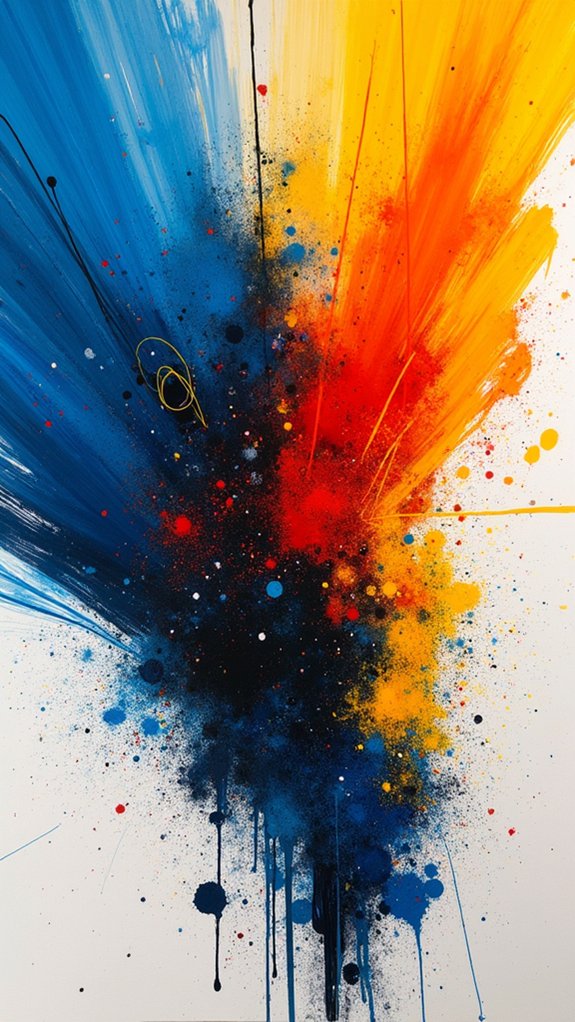
Bold colors and wild shapes take center stage with an abstract expression cover. This style explodes with energy—no neat lines or careful shading here! Instead, artists go all out, splashing on vibrant hues and creating tangled shapes that feel almost alive.
Abstract expression covers are great page ideas for anyone who wants their sketchbook to show their wild side or mysterious mood. Mixing ink, paint, even scraps of paper, piles on the texture and depth, making people want to reach out and touch. Layering patterns adds movement, like the cover is dancing before your eyes.
Cool symbols or personal marks—hidden or obvious—can sneak in a story or secret message. Balance and contrast keep everything looking wild, but never messy.
Personal Monogram Medley
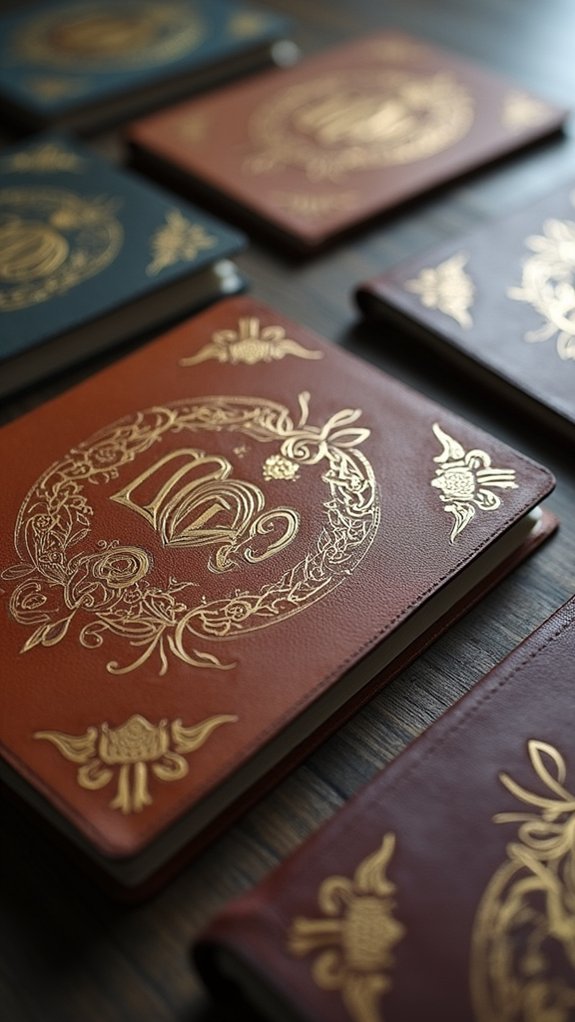
Personal Monogram Medley is all about turning your initials into artwork, and yes, making them look way cooler than a boring signature.
By designing unique letterforms and mixing in favorite patterns or bold color choices, anyone can create a cover that totally stands out—like your sketchbook just put on its favorite outfit.
Who wouldn’t want a cover that shouts, “This belongs to me!” before you even open the first page?
Designing Unique Letterforms
Letterforms are like secret codes for showing off personality—especially when it comes to designing a personal monogram medley for a sketchbook cover. By customizing the way initials appear on the page, artists let their style and mood shine through every curve and line.
It’s kind of like picking the coolest outfit, but for letters. Some play around with bold, blocky fonts; others try curly, handwritten squiggles. The magic comes from experimenting and mixing things up, so each monogram ends up totally original.
- Try out fancy ligatures or swirly flourishes to make the letters pop.
- Use ink, watercolor, or even colored pencils for unexpected texture.
- Sketch lots of drafts in the sketchbook to document each creative twist.
Monogramming turns every cover into a mini masterpiece!
Mixing Patterns and Colors
When designing a sketchbook cover, mixing patterns and colors turns a blank page into a creative playground—kind of like a party where stripes, florals, and funky shapes all show up wearing their coolest outfits.
Imagine zigzags crashing into polka dots, with your personal monogram right in the center, acting like the party host. By choosing a limited color palette, the wild mix of patterns keeps its cool and doesn’t get overwhelming—think matching socks to a wild pair of sneakers.
Layering different textures, like shiny pens next to fuzzy washi tape, adds cool surprises you can actually feel. Playing with the size and placement of patterns makes each cover totally one-of-a-kind.
Mixing patterns and colors isn’t just fun—it’s seriously eye-catching.
Character Illustration Showcase
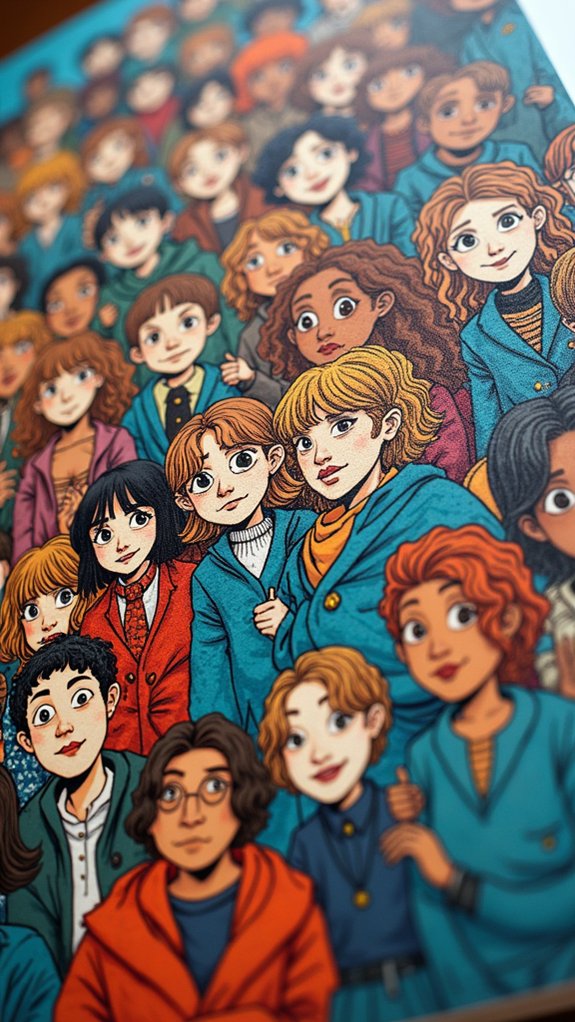
Character illustrations can turn an ordinary sketchbook cover into something totally unforgettable, like the star of a super cool movie poster. Instead of just slapping on a name or a basic doodle, bringing characters to life right on the cover makes it pop with personality, style, and a bit of storytelling magic.
Tons of people are loving this vibe—just look at the thousands checking out diary covers aesthetic online! Artists get to show off their vibe using wild poses, quirky expressions, and eye-popping mixed media like ink splashes or dreamy watercolors.
Want ideas? Try these:
- Draw a whimsical character mid-leap or dancing for crazy amounts of movement.
- Mix ink outlines with watercolor splashes for cool texture and depth.
- Create a “character squad” to show off your growth as an artist!
Inspiring Quote Centerpiece
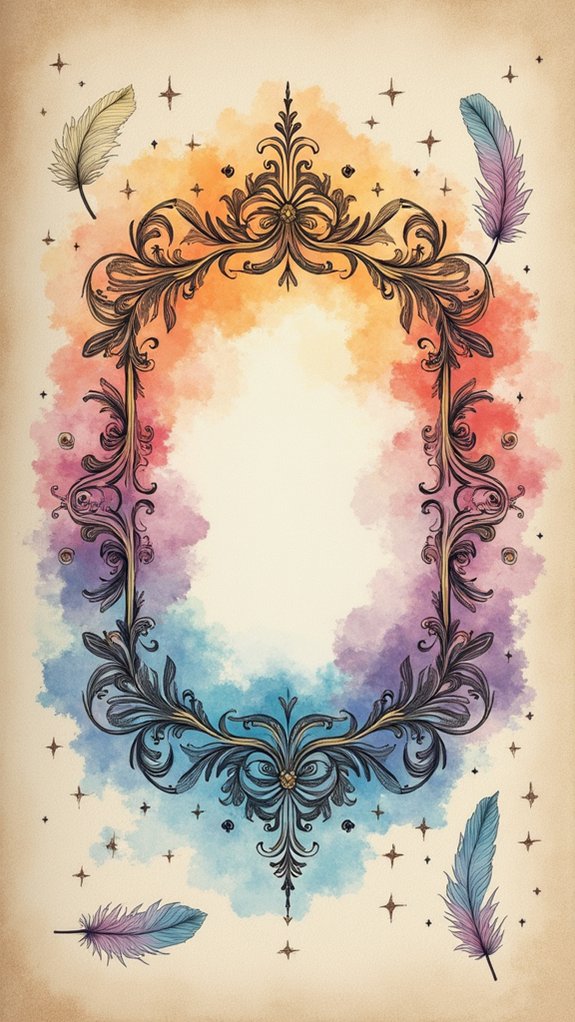
Here’s a quick peek at how people use inspiration in their sketchbook covers:
| Element | Why It’s Inspiring |
|---|---|
| Bold Fonts | Words stand out and motivate |
| Favorite Colors | Evokes positive, creative energy |
| Decorative Doodles | Personal touch boosts inspiration |
Botanical Line Art Borders
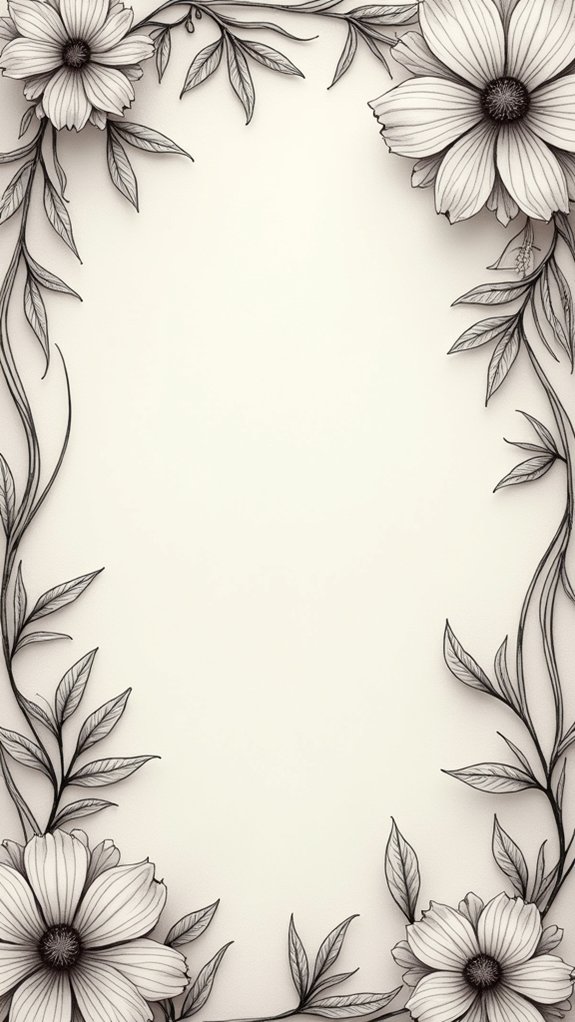
When it comes to making your sketchbook cover pop, botanical line art borders are a total game-changer.
Artists can play with delicate leafy frame styles, try out classic floral corners for a bit of extra elegance, or even keep things cool with minimal, modern plant motifs—there’s no wrong way to let the plants take over.
Whether you’re all about wild jungle vibes or subtle sprigs, these designs pack in both nature and personality, and honestly, who doesn’t want their sketchbook looking that good?
Delicate Leafy Frame Styles
Even as a blank sketchbook cover stares back at an artist, there’s something magical about framing that space with delicate, leafy borders.
These botanical line art borders aren’t just pretty—they instantly give a dash of nature’s best ideas and inspiration to the cover, turning plain into epic!
Made with thin, detailed lines, these leafy frames look calm and sophisticated, fitting just about any mood or art style.
What’s awesome is how flexible they are: artists can draw them with pens, splash them with watercolor, or go full digital.
Whether a sketchbook needs a touch of elegance or a spot for a bold title, leafy frames are up for the task.
- Simple vine loops for a minimalist border
- Dainty ferns twining around the edges
- Layered eucalyptus branches, softly framing the space
Floral Corners for Elegance
Floral corners are like a secret weapon for leveling up any sketchbook cover, instantly pulling in a bit of that elegant, classic vibe.
They use thin, swirling lines to show off flowers and leaves, framing the cover art in a way that’s both neat and totally eye-catching. It’s kind of like giving your sketchbook its own fancy frame, but one you made yourself!
Floral corners work with lots of different materials—think pen, ink, even watercolor—so everyone can find their perfect match. They’re awesome for showing off your personal style and keeping a nature-inspired theme going.
Bonus: while you’re drawing these cool botanical borders, you just might get inspired to fill your sketchbook with even more wild, leafy ideas.
Minimal Modern Plant Motifs
Minimal modern plant motifs are like the cool, artsy cousins of classic botanical designs—stripped down to just a few clean lines that somehow say everything. They take the super-complicated stuff about leaves and vines and make it look chill and stylish.
Instead of wild swirly patterns everywhere, minimal modern plant motifs stick to simple shapes, keeping things neat and calm. These motifs work especially well for sketchbook covers because they don’t steal the show, but they still have this sneaky way of making everything look awesome.
Plus, using botanical line art borders adds a natural, eco-friendly vibe that’s trendy right now. Picture these ideas:
- Thin leafy outlines framing the page
- Monochrome sprigs in each corner
- A single elegant stem stretching along the edge
Vintage Ephemera Layout
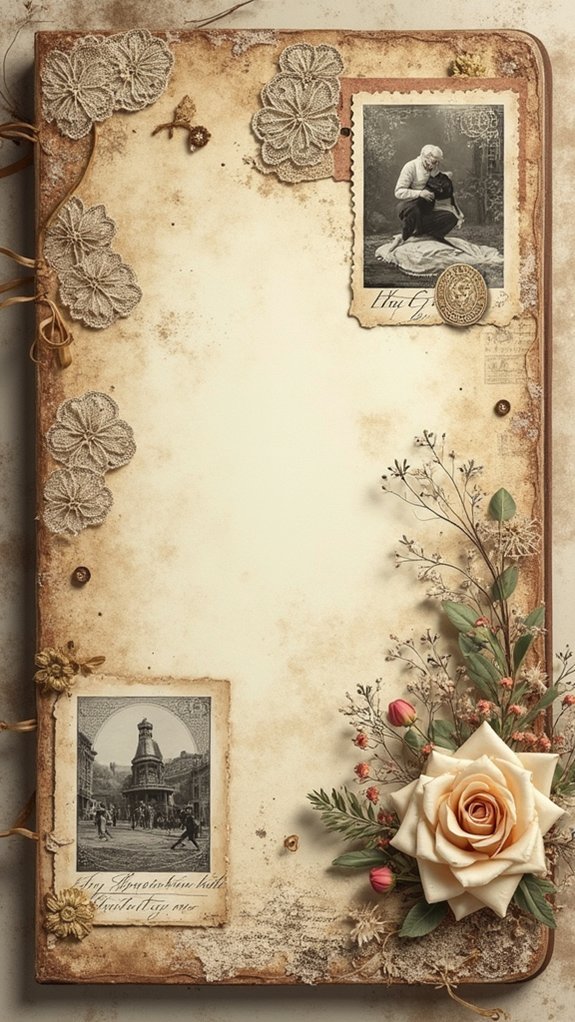
A vintage ephemera layout is like a time machine for sketchbook covers—suddenly, you’re flipping through pages filled with old postcards, crinkled ticket stubs, and dreamy botanical prints from way back when.
Think of it as a scavenger hunt for the coolest scraps of history! To nail this look, mix up textures: aged paper, faded colors, and handwritten notes all add major old-school vibes.
Don’t forget retro typography, either—finding old magazine fonts or scribbling in your own “grandma handwriting” is totally on-theme.
Layer stuff up for an extra pop; overlapping stamps, paperclips, or mystery tickets makes your cover feel deep and mysterious.
Stick to a cozy color palette—sepia, faded greens, or dusty pink. It’s messy, nostalgic, and full of adventure!
Frequently Asked Questions
What Should I Put on the Front of My Sketchbook?
When considering what to put on the front of a sketchbook, one might choose meaningful artwork, playful doodles, or creative quotes. Personal touches such as hand lettering or stickers can capture artistic identity while inspiring creativity within.
How Do You Make an Aesthetic Sketchbook?
To make an aesthetic sketchbook, one draws creative inspiration from personal interests, using unique illustrations, meaningful drawings, stickers, and thematic layouts. This personalization transforms each page, cultivating a visually appealing, expressive space for ongoing artistic exploration and growth.
What Should I Draw on the First Page of My Sketchbook?
The current question prompts exploration of Creative Inspiration for a sketchbook’s first page. An artist might choose personal symbols, meaningful quotes, or mixed media elements, creating an expressive introduction that sets the tone for future artistic exploration.
How Do I Date a Sketchbook?
Dating a sketchbook enhances Sketchbook Organization by marking the start date on the first page or cover and adding individual dates to entries. This method allows artists to track progress, identify trends, and reflect on creative growth.
Conclusion
So, whether you love crisp lines or chaotic doodles, your sketchbook cover can be anything but boring! Each design idea here kicks off a blank page with personality, kind of like your personal sneak peek. Don’t stress about making it perfect—sometimes the quirkiest covers are the coolest. Grab your markers, maybe some stickers, and let your wild side loose. Your sketchbook deserves a cover as awesome as what’s inside, so go ahead, give it some serious character!

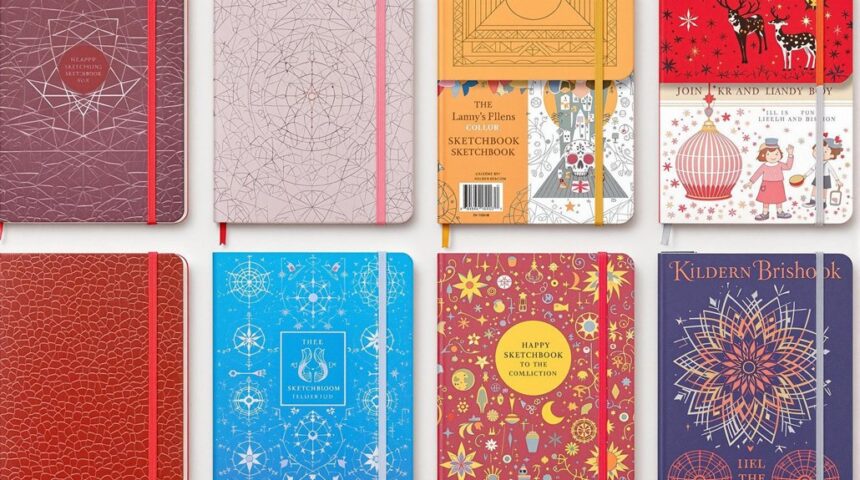
Leave a Reply